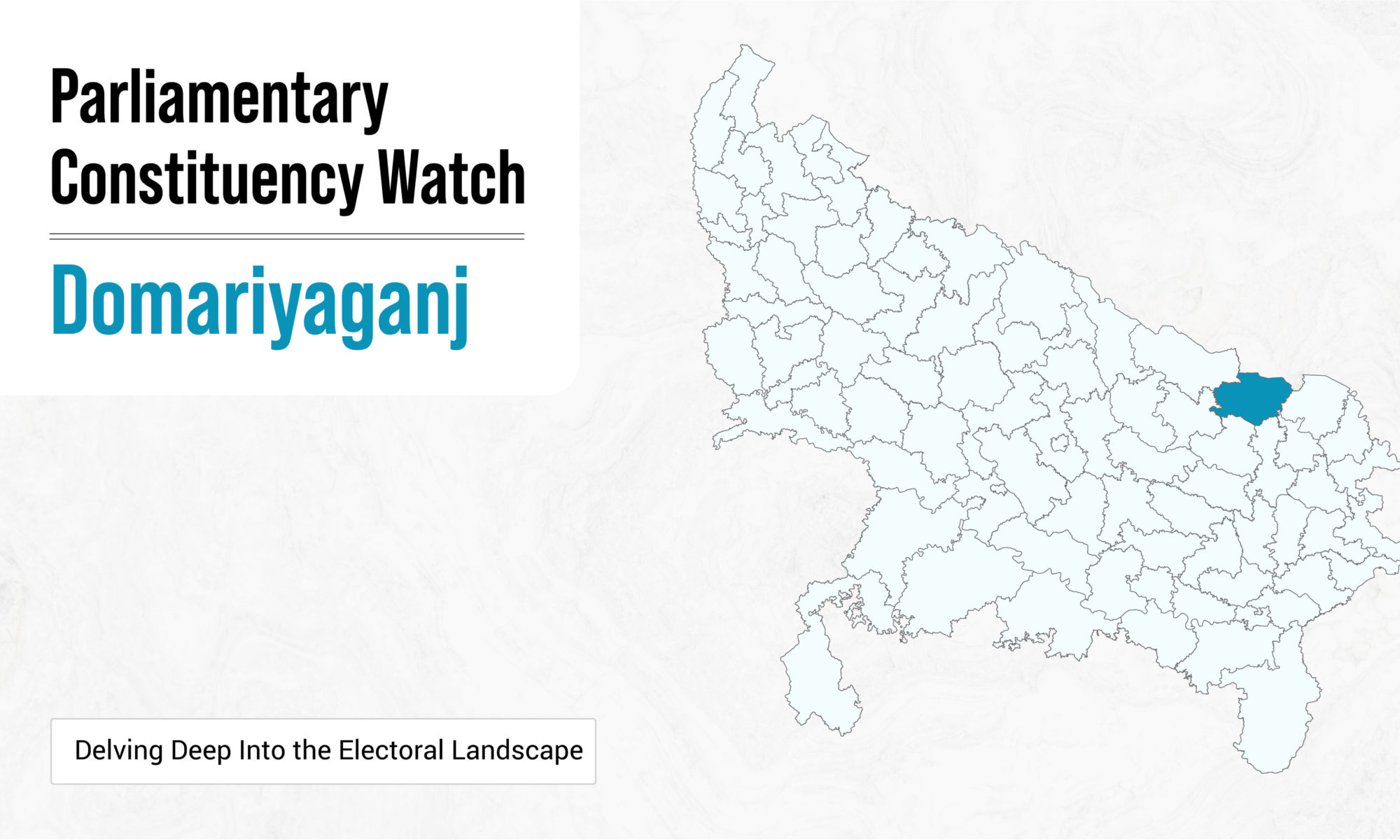Location
Domariyaganj Lok Sabha constituency is one of the 80 Lok Sabha constituencies in the Indian state of Uttar Pradesh. It comprises 5 assembly constituencies and a district.
Category
Designated as a General Constituency.
Voter Turnout
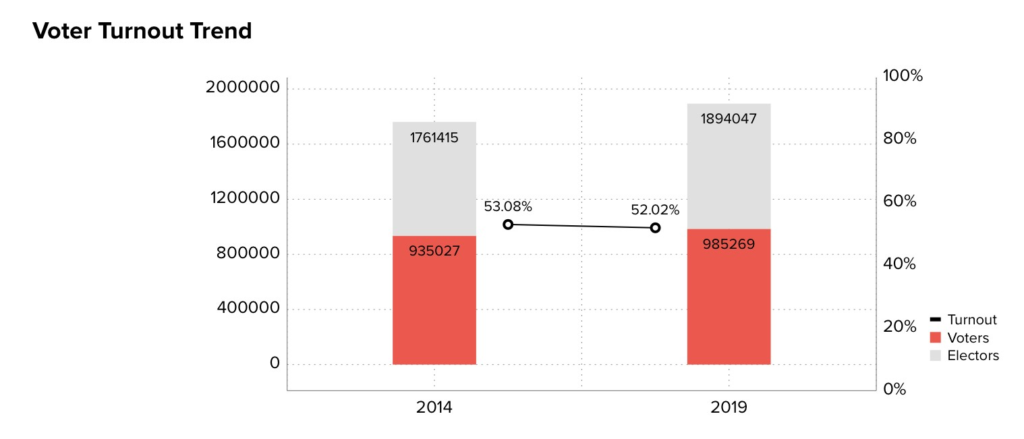
Domariyaganj Electoral Turnout Rates
During the 2014 elections, the total number of electors was 17,61,415 and the turnout stood at 53.08%, in real numbers- 9,35,027 voters. 2019 witnessed a turnout decrease; out of the 18,94,047 electors, 572.02% of voters exercised their constitutional rights. In real numbers- 9,85,269 voters.
Representation and Results
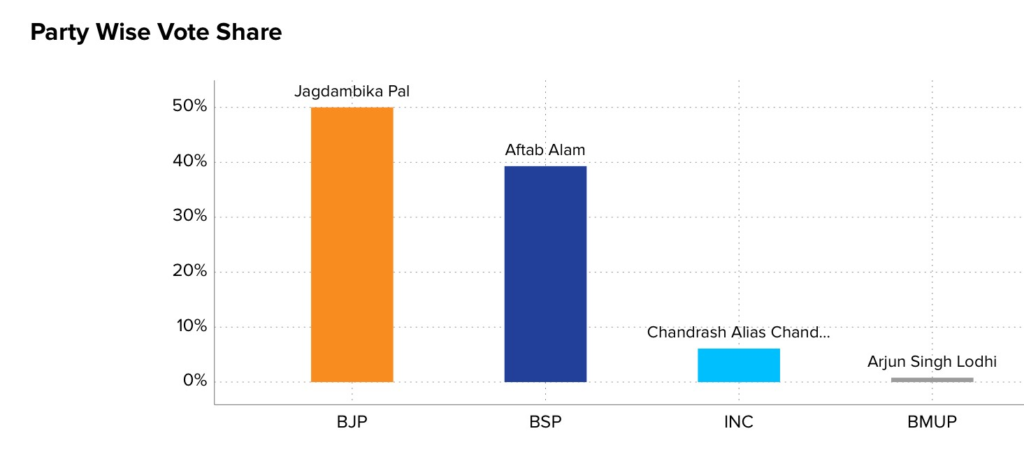
Domariyaganj Party Wise Vote Share
2019’s parliamentary election winner, BJP’s Jagdambika Pal gained a vote share of 50.00% and defeated BSP’s Aftab Alam whose vote share stood at 39.30%. The other prominent candidates in the fray were INC’s Chandrash with 6.10% of vote share and BMUP’s Arjun Singh Lodhi with 0.80%.
Voting History –2014 & 2019
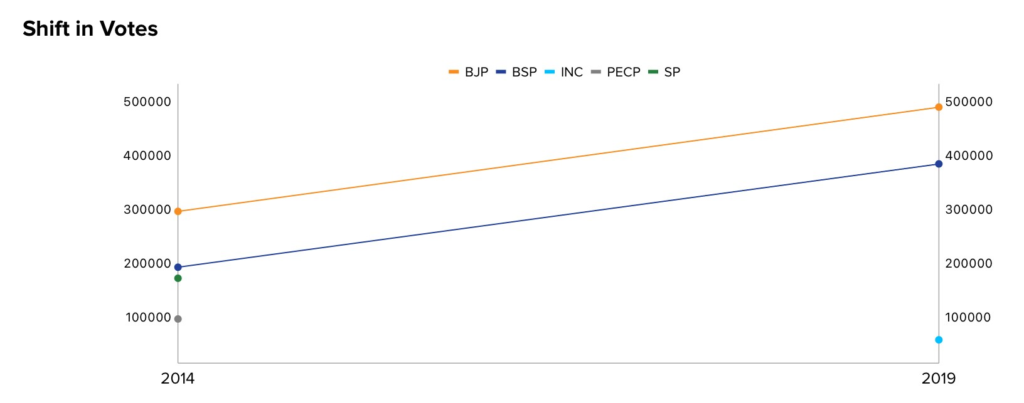
Domariyaganj Party Wise Vote Share
In 2014, BJP won the constituency and earned 2,99,845 votes followed by 4,92,253 votes in the 2019 election victory. On the other hand, BSP garnered 1,95,257 votes in 2014 and 3,86,932 votes in the 2019 elections.
Parties at helm through the years
The Domariyaganj constituency has been represented by a number of different parties over the years.

Timeline of Winning Parties
In 1952, the Indian National Congress (INC) was in power, and they continued their reign in 1957 and 1962. However, in 1967, the Bharatiya Jana Sangh (BJS) came into power, followed by the INC’s return in 1971. In 1977, the Janata Party (JP) assumed control, but the INC regained power in 1980 and 1984. The year 1989 saw the rise of the Janata Dal (JD), succeeded by the Bharatiya Janata Party (BJP) in 1991.
The Samajwadi Party (SP) came into power in 1996, and the BJP returned to govern in 1998 and 1999. In 2004, the Bahujan Samaj Party (BSP) held power, followed by the INC in 2009. The BJP then won the elections in 2014 and 2019, maintaining its political dominance.
Party-wise success rate

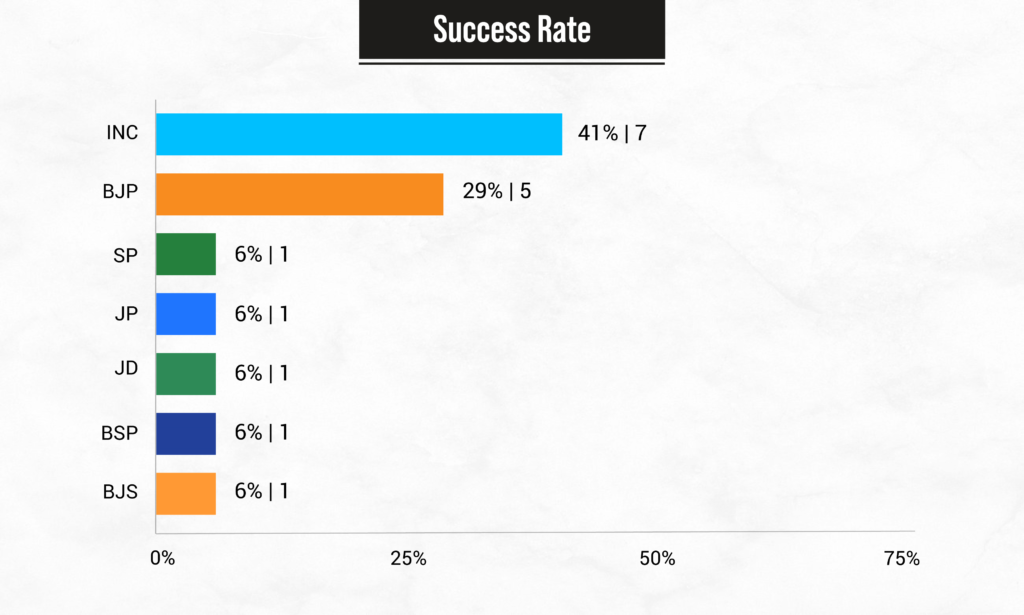
Success Rate
In terms of the success rate in securing the Domariyaganj Lok Sabha seat, INC had exhibited the highest rate of success over the years, standing at 41% followed by BJP with 29%. Among other prominent parties, BSP and JD enjoyed a success rate of 6% each.
Gender Wise Distribution of Contestants

During the 2009 elections, there were 16 contestants and all of them were male. In 2014, the total number of contestants was 17, out of which 16 were male and 1 female, in percentage- 94% and 6% respectively.
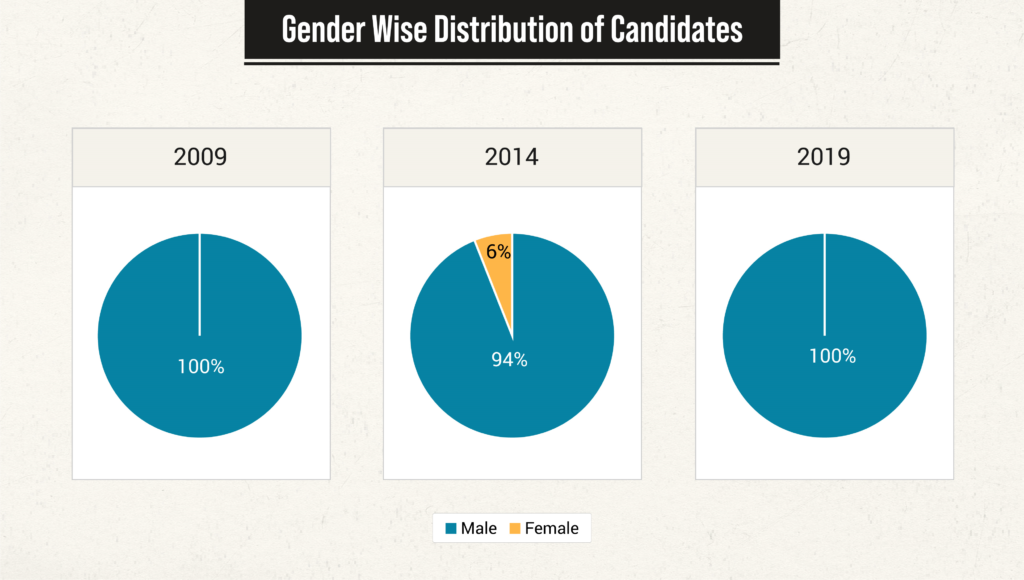
Gender Wise Distribution of Candidates
In 2019, the number of contestants decreased to 10 and all of them were male with no participation from females.
Gender wise voter turnout
In 2009, out of a total of 14,99,586 electors, 7,37,691 voters cast their ballots. Of the 8,13,478 male electors, 3,90,665 participated in the election, constituting a turnout rate of 48%. There were 6,86,108 female electors and of that, 3,47,026 chose to vote with a turnout rate of 51%.
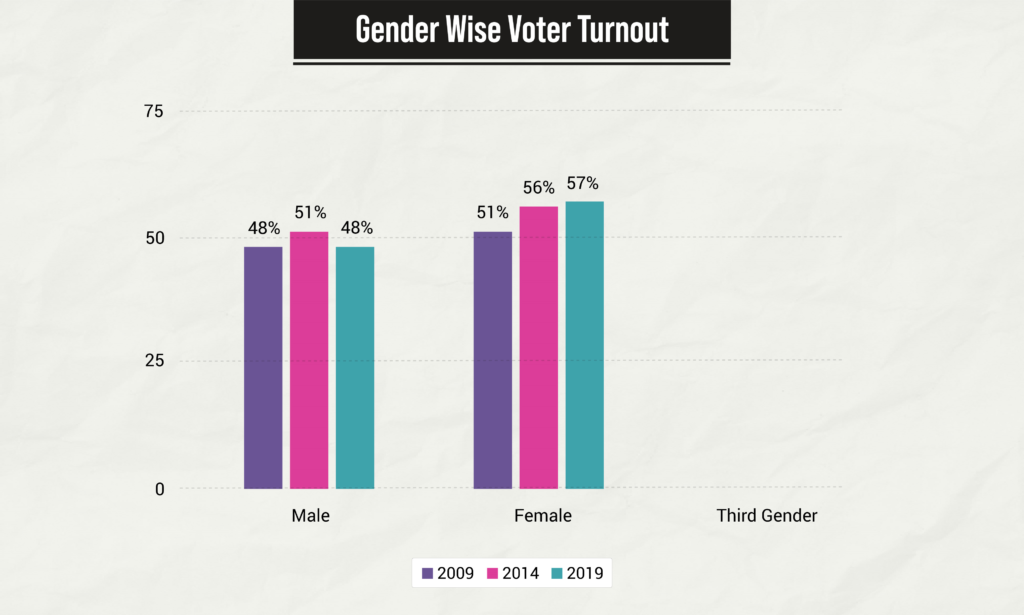
Gender Wise Voter Turnout
In 2014, there are 17,61,415 people who are eligible to vote and 9,35,027 of them chose to exercise their right to vote. Out of these, 9,61,957 were male electors and 7,99,458 were female electors. 51% of male electors (4,90,141) and 56% of female electors (4,44,886) cast their ballots.

The total count of electors in 2019 was 18,85,262 out of which 9,85,115 chose to cast their ballot in the parliamentary elections. Out of 10.17,938 male electors, only 48% voted which is 4,89,185 male voters in real numbers. On the other hand, the voter turnout for females stood at 57% which translates to 4,95,930 voters out of a total of 8,67,324 female electors in real number.
Gender-Wise Literacy Rate
We are taking a peek at the gender-wise literacy rate of the Siddharth Nagar district which is part of the Domariyaganj parliamentary constituency as literacy is considered an essential indicator of the socioeconomic development of the region.
Siddharth Nagar District

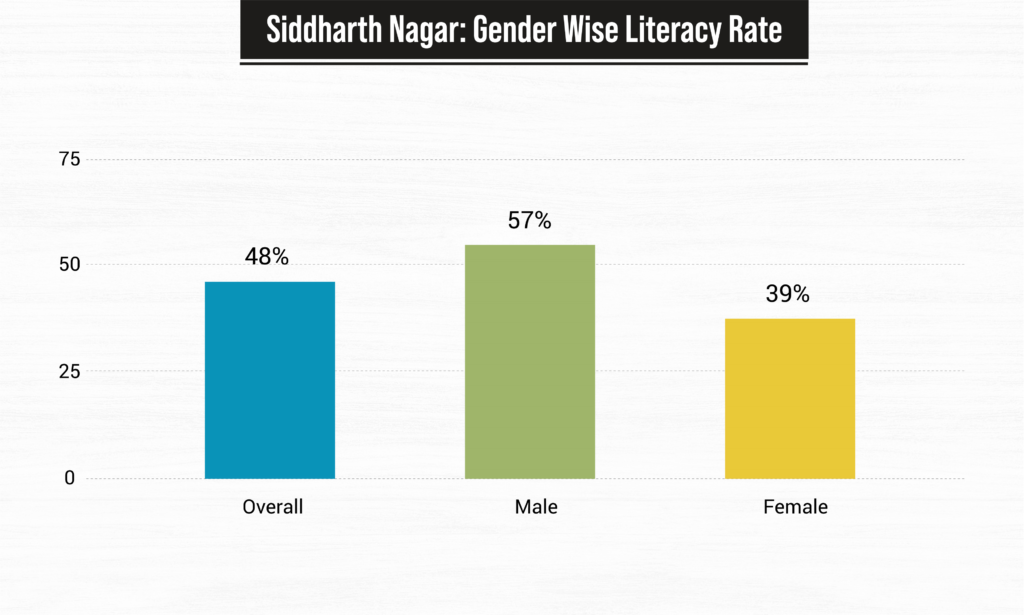
Gender Wise Literacy Rate
The 2011 census of India has pegged the overall literacy rate of the district at 48%. Gender-wise, the male literacy rate in the district is 57% whereas, for females, the literacy rate stands at 39%.
Stay updated on the electoral statistics for parliamentary constituencies and the changing dynamics on Meradesh App. Available on Appstore and Play Store.
Reach your constituents, gain insights into their motivations, and build campaigns based on data-driven strategies with the Meradesh Platform.
Data Source – Meradesh.org
